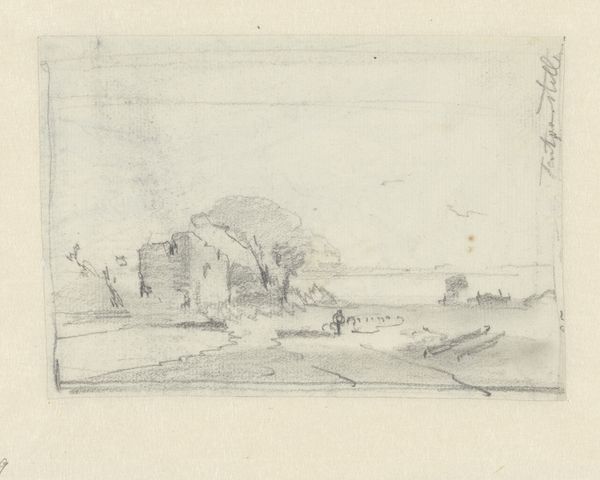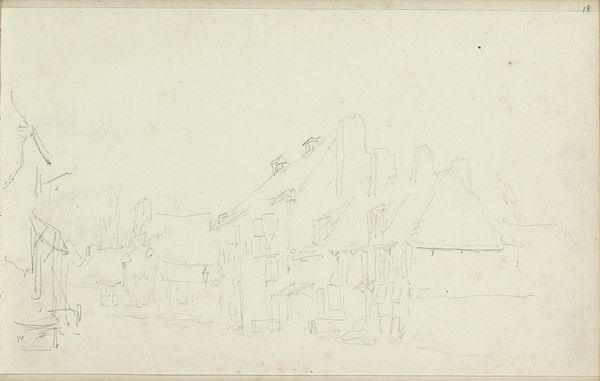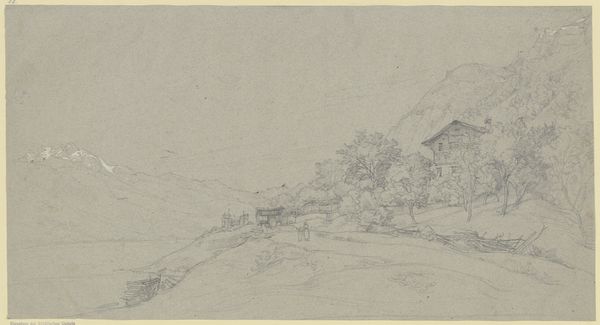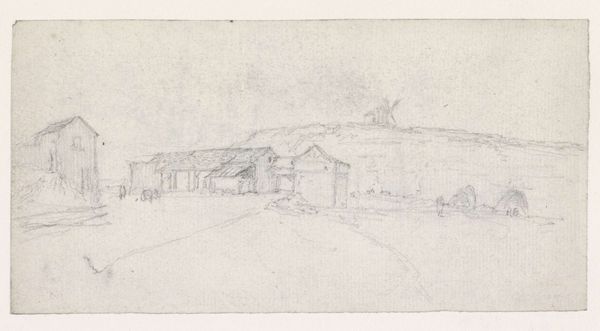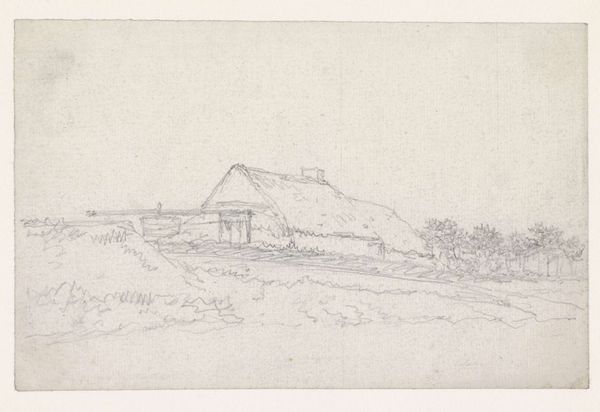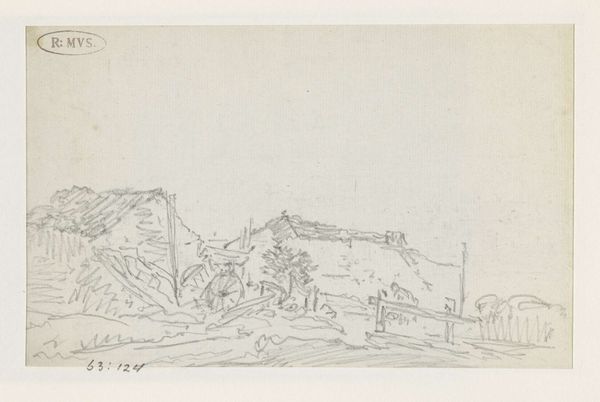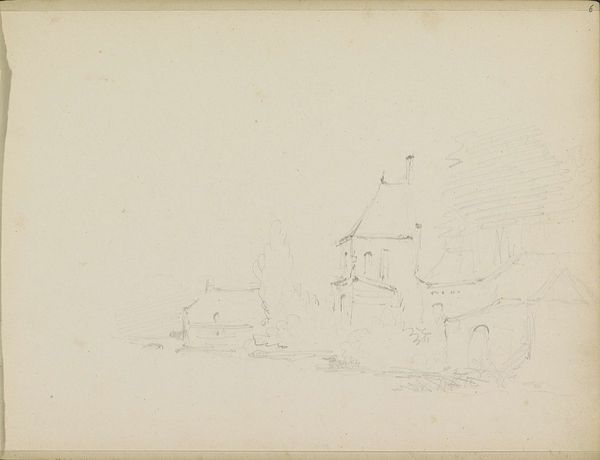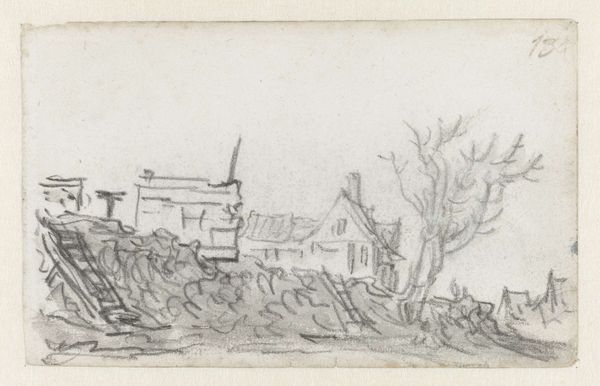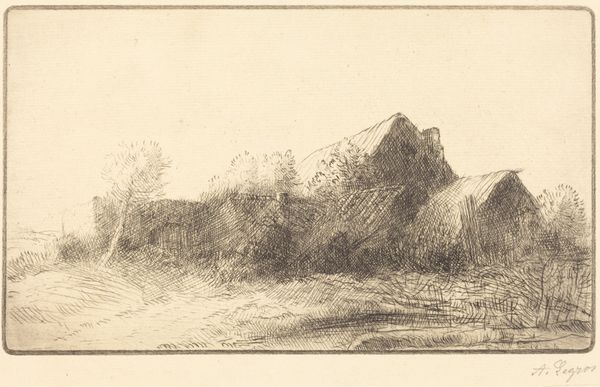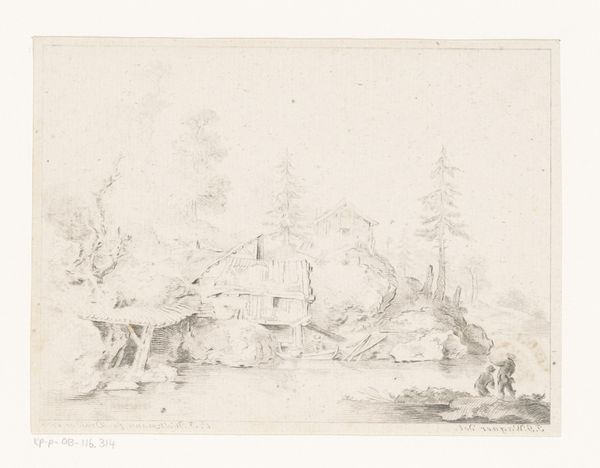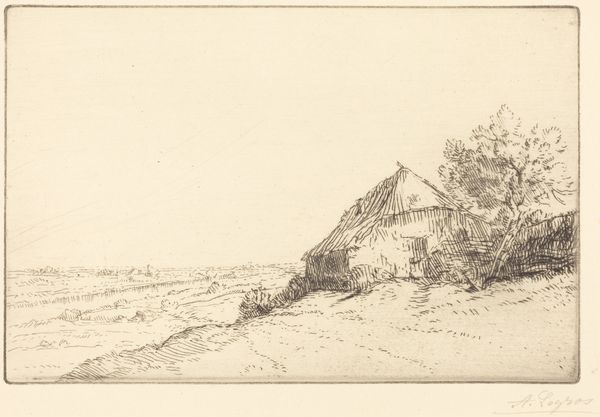
drawing, pencil
#
drawing
#
pencil sketch
#
landscape
#
romanticism
#
pencil
#
cityscape
#
realism
Dimensions: height 132 mm, width 204 mm
Copyright: Rijks Museum: Open Domain
Editor: So, here we have Andreas Schelfhout’s "Sketch of a Village View," created sometime between 1797 and 1870. It’s a delicate pencil drawing, housed at the Rijksmuseum. The lightness of the pencil gives it an ephemeral feel. What are your thoughts when you look at it? Curator: What strikes me is the directness of the pencil on paper, a stark record of Schelfhout’s labor. Consider the ready availability of paper and pencil in the 19th century, how the increasing accessibility of materials impacted artistic production and allowed for the proliferation of sketches like this, outside the traditional boundaries of high art. How does this sketch, seemingly so simple, participate in broader shifts in the art market? Editor: That's interesting, I hadn't considered it that way. I guess I was focused on its romantic or realist aspects – the simple portrayal of daily life, like a quick snapshot. Curator: Exactly! The Realist aspect challenges earlier conventions of idealized landscape. The speed and portability afforded by pencil allowed Schelfhout to directly capture observed reality. Is this an unbiased rendering, or is the choice of what to depict a comment in itself? Editor: It’s almost…democratic, isn't it? Choosing to sketch a commonplace village instead of some grand vista. Does that have implications on who consumes art? Curator: Precisely! Think about the intended audience and how this accessibility might be seen as both a positive development and a threat to the established art world. What is lost when art making is decentralized? Editor: I see your point. It's made me consider how artistic media affect artistic democratization. Thanks. Curator: And I appreciate your insights into romanticism's impact on such a humble yet fascinating medium and perspective.
Comments
No comments
Be the first to comment and join the conversation on the ultimate creative platform.
